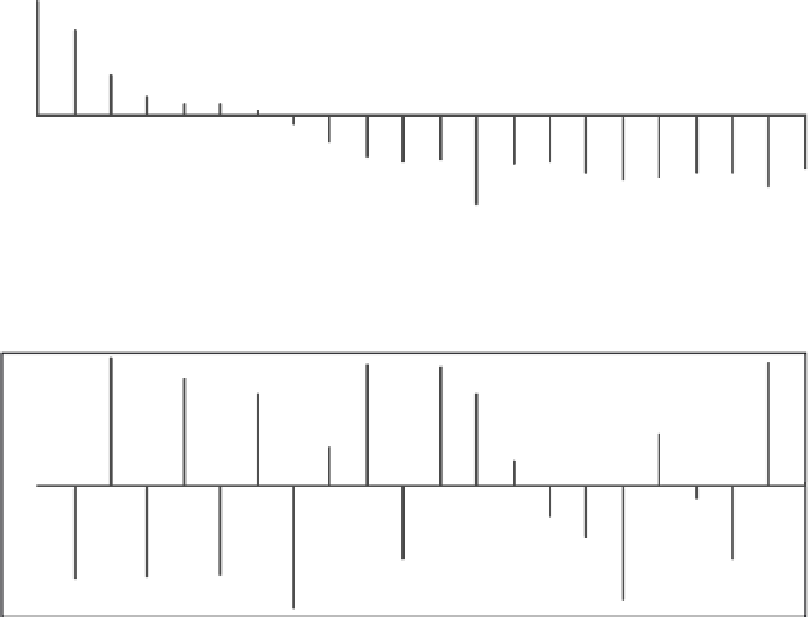Biomedical Engineering Reference
In-Depth Information
A(m) (mmHg)
100
10
1
.1
.01
0
2
4
6
8
10
12
14
16
18
20
(m) (radians/s)
Æ
3
2
1
0
−
1
−
2
−
3
0
2
4
6
8
10
12
14
16
18
20
m
FIGURE 11.10
Harmonic coefficients of the aortic pressure waveform shown in Figure 11.2.
is borne out of the Fourier series representation for a periodic signal. A signal can be
expressed either in the “time-domain” by the signal's time function,
), or alternatively
in the “frequency-domain” by specifying the Fourier coefficient and phase,
x
(
t
A
m
and f
m
,as
a function of the signal's harmonic frequencies, o
m
¼
m
. Thus, if we know the Fourier
coefficients and the frequency components that make up the signal, we can fully recover
the periodic signal
o
o
).
One of the disadvantages of the Fourier series is that it applies only to periodic sig-
nals, and many biological signals are not periodic. In fact, a broad class of biological sig-
nals includes signals that are continuous functions of time but that never repeat in time.
Luckily, the concept of Fourier series can also be extended for signals that are not peri-
odic. The Fourier integral, also referred to as the Fourier transform, is used to decom-
pose a continuous aperiodic signal into its constituent frequency components
x
(
t
1
x
ð
t
Þ
e
j
o
t
dt
X
ð
o
Þ¼
ð
11
:
6
Þ
1















































